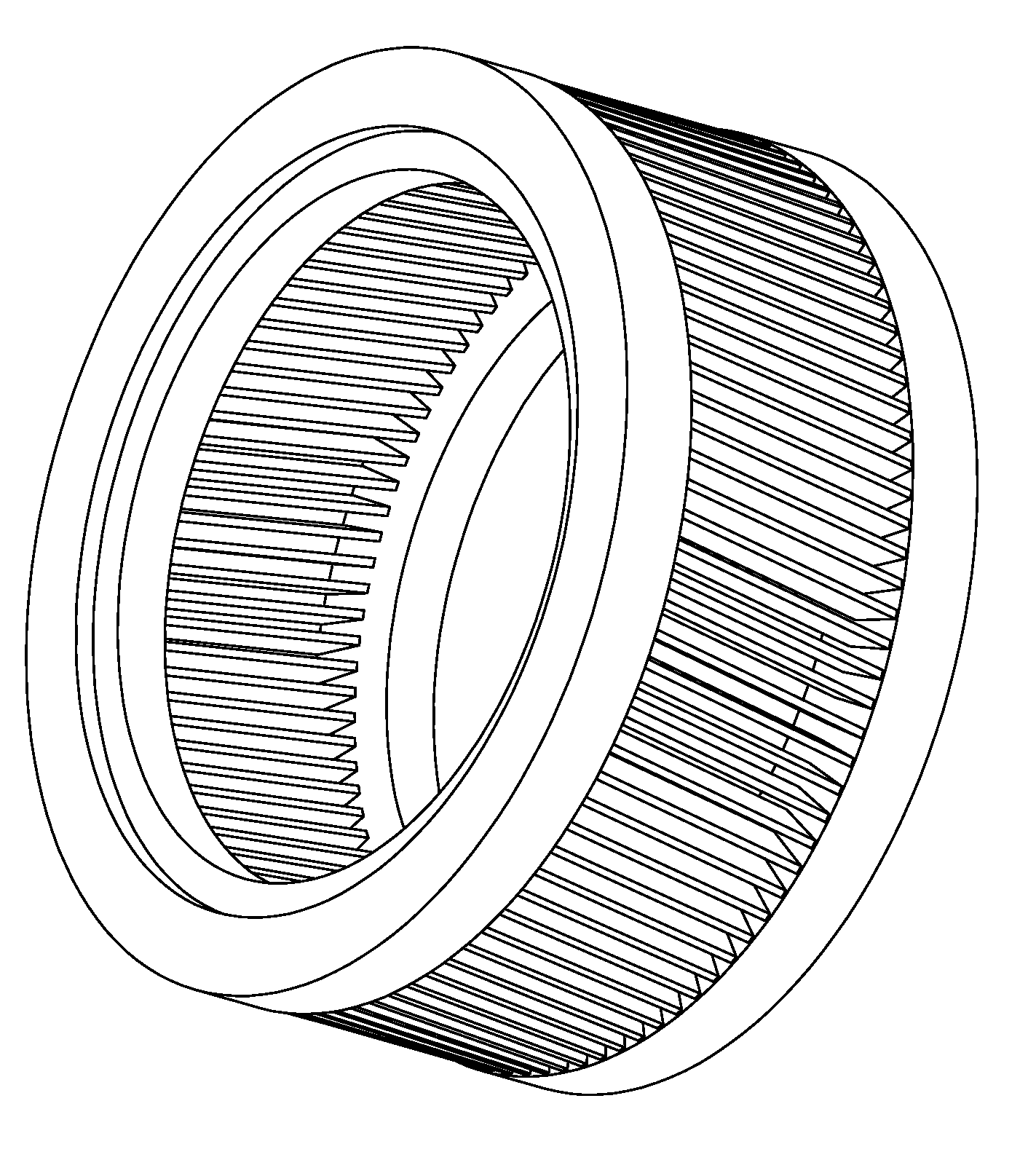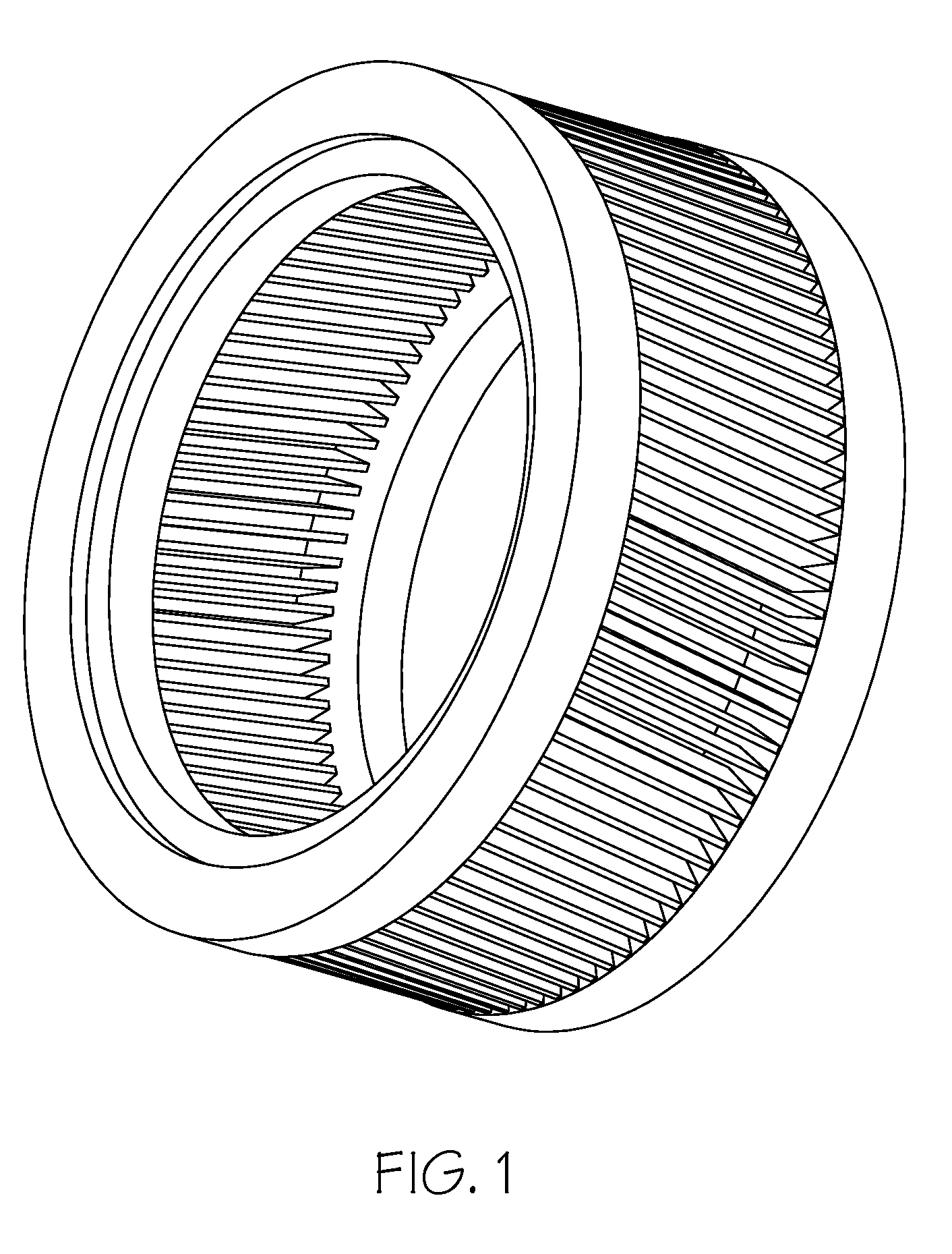Aluminum based composite squirrel cage for induction rotor and methods of making
a composite rotor and squirrel cage technology, applied in the field of induction motors, can solve the problems of rotating and torque generation, high centrifugal force and inertia, and copper limitations and/or unique problems
- Summary
- Abstract
- Description
- Claims
- Application Information
AI Technical Summary
Benefits of technology
Problems solved by technology
Method used
Image
Examples
Embodiment Construction
[0014]An aluminum composite material is used to make the squirrel cage for the rotor application. The aluminum composite cage has high electrical conductivity for high motor performance, high mechanical properties (strength, fatigue and creep resistances) for machine durability and design flexibility, and a lower scrap rate for lower manufacturing cost. Specifically, the cage bars are made of an aluminum matrix / carbon nanotube (CNT) composite, or a combination of the aluminum matrix / carbon nanotube (CNT) composite and pure aluminum (for example, the inner layer is the Al-CNT composite and the outer layer is pure Al). The ends can be made of pure aluminum, cast aluminum alloys, such as A380, A356, A319, etc., or an aluminum composite, including, but not limited to, aluminum carbon nanotubes composites. Cast aluminum alloys are preferred, The whole structure can be manufactured using a cast-in-place process, for example. In the cast-in-place process, the bars are premade and then plac...
PUM
| Property | Measurement | Unit |
|---|---|---|
| time | aaaaa | aaaaa |
| pressure | aaaaa | aaaaa |
| temperature | aaaaa | aaaaa |
Abstract
Description
Claims
Application Information
 Login to View More
Login to View More - R&D
- Intellectual Property
- Life Sciences
- Materials
- Tech Scout
- Unparalleled Data Quality
- Higher Quality Content
- 60% Fewer Hallucinations
Browse by: Latest US Patents, China's latest patents, Technical Efficacy Thesaurus, Application Domain, Technology Topic, Popular Technical Reports.
© 2025 PatSnap. All rights reserved.Legal|Privacy policy|Modern Slavery Act Transparency Statement|Sitemap|About US| Contact US: help@patsnap.com



